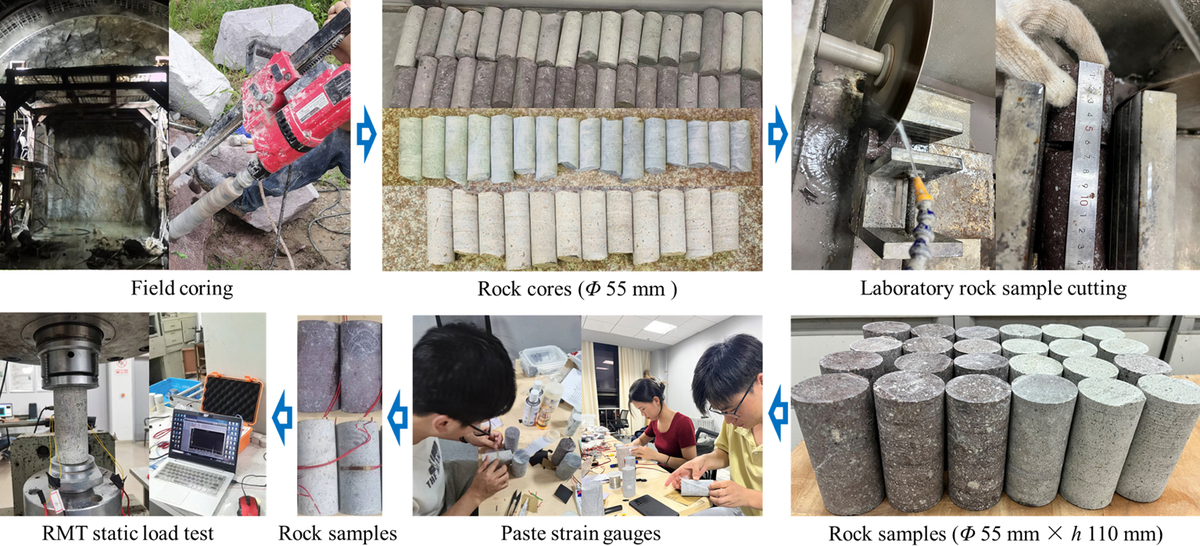Static mechanical properties and damage evolution characteristics of selected rocks in diversion tunnel under uniaxial loading
1
School of Civil Engineering and Architecture, Anhui University of Science and Technology, China
2
Project department, Zhejiang Tunnel Engineering Group Co., Ltd., China
These authors had equal contribution to this work
Submission date: 2023-09-17
Final revision date: 2024-01-03
Acceptance date: 2024-01-23
Publication date: 2024-09-30
Corresponding author
Rongzhou Yang
School of Civil Engineering and Architecture, Anhui University of Science and Technology, Huainan, China
School of Civil Engineering and Architecture, Anhui University of Science and Technology, Huainan, China
Archives of Civil Engineering 2024;70(3):401-418
KEYWORDS
uniaxial compressionfracture mechanismdamage evolutiondamage constitutive modeluniaxial splittinggranite/tuff
TOPICS
ABSTRACT
To study the mechanical properties and damage evolution characteristics of selected rocks in diversion tunnels under uniaxial loading, the uniaxial compression and uniaxial splitting tests of granite and tuff were carried out. In terms of mechanical properties, the evolution characteristics of complete stress-strain curves, instantaneous modulus-strain curves, and input energy density-strain curves were analyzed. In the aspect of damage characteristics, the macroscopic and mesoscopic failure modes were analyzed and the damage fracture mechanism was revealed. Compression-shear failure mainly occurred in granite and tuff under uniaxial compression, showing the characteristics of elastic-brittle fracture failure. Both granite and tuff showed a failure mode of coexistence of "compression-shear failure zone at the loading ends" and "tension-shear failure zone in the middle" under uniaxial splitting. The compression-shear fracture of granite was relatively smooth, and the matrix and mineral particles produced fine particles due to friction in the process of shear slip. The compression-shear fracture of tuff was relatively rough and the characteristics of shear slip were not prominent enough. The fracture failure of granite and tuff was mainly caused by the common fracture of rock matrix and mineral particles. Based on the Lemaitre equivalent strain principle, the pre-peak-post-peak two-stage damage constitutive model established by Weibull statistical distribution theory can accurately describe the static stress-strain relationships of granite and tuff under uniaxial compression.
Share
RELATED ARTICLE
We process personal data collected when visiting the website. The function of obtaining information about users and their behavior is carried out by voluntarily entered information in forms and saving cookies in end devices. Data, including cookies, are used to provide services, improve the user experience and to analyze the traffic in accordance with the Privacy policy. Data are also collected and processed by Google Analytics tool (more).
You can change cookies settings in your browser. Restricted use of cookies in the browser configuration may affect some functionalities of the website.
You can change cookies settings in your browser. Restricted use of cookies in the browser configuration may affect some functionalities of the website.




